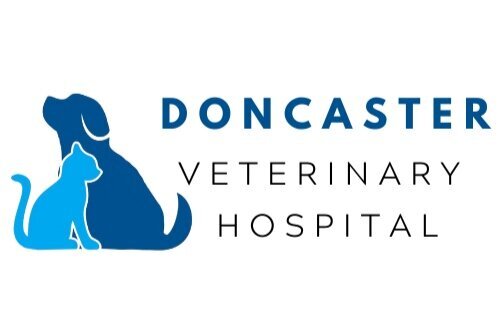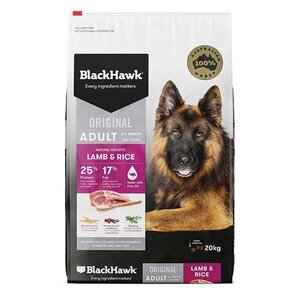What is the best food for your pet?
There are so many different kinds of pet foods on the market—and choosing one can be a very overwhelming task.
Which one do I pick?
How do I know it’s the best one for MY pet?
Is expensive pet food better?
Should I be feeding them a raw food diet?
From supermarket and boutique pet food to prescription food and raw diets, there are so many options for feeding our furry friends. And the pressure of choosing the right pet food can be stressful—especially if your pet has specific medical needs.
What to look for when choosing pet food
When we talk about pet food, we are looking for a “complete AND balanced” diet. A complete diet means the food contains everything needed to support life and reproduction without the addition of any nutrients except water. A balanced diet means the food has all of the required nutrients in the proper amount and in the proper proportion to each other.
At Doncaster Vet, we think giving your pet its best chance at health should be simple and easy. That’s why we’ve put together this handy guide to help you decide what the best food for your pet is.
Supermarket pet food
Supermarket pet food often has a bad reputation and a lot of it comes from the fact that the pet food industry isn’t regulated so brands can put anything in. Most brands use fillers to bulk up their foods or switch up the recipes which can lead to excessive thirst due to increased salt levels and excessive farting due to a constantly changing recipe.
However, if supermarket food is all you can afford, choose the more expensive options - you get what you pay for.
Pros
Affordable: supermarket brands are typically more budget-friendly.
Accessible: they’re quick and easy to source.
Cons
Quality: the quality of these products are generally not as good as boutique or prescription brands.
One size fits all: while supermarket brands do sometimes have specific food for specific concerns, it’s typically one-size-fits-all, meaning it most likely won’t target your pet’s specific health concerns.
Boutique pet food
Boutique pet foods—like Black Hawk and Ivory Coat—tend to be better quality than supermarket pet food brands. Premium brands typically have higher quality protein sources that are easier to digest, instead of cheaper fillers like wheat, soy and gluten. Higher quality nutrients also mean your pet is more likely to thrive, and live a longer, happier life.
Boutique pet foods also often include a bunch of fancy ingredients, like emu, flaxseed and salmon oils (which are good sources of omega 3, 6 and 9), oats and brown rice (which are great sources of slow-release energy and fibre), as well as fruits and veggies like kale and blueberries to boost antioxidant intake.
Pros
Quality: they’re usually a lot better for our pet’s health.
Ingredients: they’re often created with the help of animal nutritionists, so the carefully chosen ingredients target vitamins and minerals to help pets thrive. They also typically have no cheap fillers, artificial colours, flavours or preservatives.
Cons:
Price: boutique pet foods are more pricey than supermarket foods.
Accessibility: they can only be bought at pet shops
Non-prescription: while they’re typically higher quality than supermarket brands, they’re not as good for a pet’s health as a prescription pet food from your vet.
Prescription pet food
Prescription pet foods are almost always the best option for your pet. This is because they’re created using the highest quality of products—and because they treat and manage specific health concerns.
Like humans, our pets need quality nutrition. And also like humans, many pet health issues are impacted by diet. With prescription pet food brands like Hills and Royal Canin, you can be sure your pet’s health is being looked after. With biology-based nutrition, prescription pet food brands have specific foods for specific requirements, based on your pet's size, breed and health conditions. Prescription pet foods can target many conditions, including those involving weight, chronic and severe health issues, the liver, joints, digestion, dental and more. They are also the best option when your pet is recovering from surgery, or living with a chronic health condition.
Prescription pet food is a complete AND balanced diet and because of this, you can give your pets less of it! When you break down the cost per feed, it works out almost the same as cheaper supermarket food.
Pros:
Quality: ingredients are often of the highest quality, with no cheap fillers.
Health: they’re specifically formulated to optimise your pet’s health, and target or manage any health concerns. It will help your pet live a longer, healthier life.
Long lasting: because of the higher quality of ingredients, your pet will feel fuller for longer, and won’t need to eat as much to be satisfied.
Save: because prescription pet foods typically last longer, you’ll save money in the long-term—not to mention money saved on preventable vet visits due to feeding them a better diet.
Guided by your vet: with prescription pet food, you don’t have to worry about making sure it’s the right food for your pet—because your vet knows.
Cons:
Cost: prescription pet foods are quite expensive.
Accessibility: they are usually only available to be purchased at a vet clinic or with a vet prescription at a pet store.
Raw food diet for pets
While the popular raw food diet is quite controversial, it can be a great option for feeding your pet. The raw food diet is based on the idea of feeding animals what they would have eaten before domestication, with an emphasis on raw meats, bones, fruits and vegetables. It’s only become popular in the last few decades, mainly due to Aussie vet Ian Billinghurst, who coined the BARF diet in 1993—the Bones and Raw Food diet (also known as Biologically Appropriate Raw Food diet).
Raw food diets boast they’ll promote healthier skin, shinier coats, cleaner teeth and higher energy levels. Common ingredients include muscle meat on bone, bones (whole or ground), organ meats, raw eggs, and fruits and veggies like broccoli, spinach, celery and apples.
For most pets, this option is more beneficial than processed foods—but there are also documented risks, as well. For example, if you aren’t giving your pet the nutrition it needs, it can damage their health long-term. Too little fat can your pet’s coat, and not enough protein can cause mild anemia. Bone fractures and dental problems can also be a risk if your pet’s diet lacks enough calcium and phosphorous. Other risks include threats from bacteria in raw meat, and the potential for whole bones to choke, break teeth, or cause internal punctures.
If in doubt, it’s always best to consult with your vet with regular check ups to ensure your pet’s health.
Pros:
Health: due to the lack of processed foods, as well as no artificial colours and flavours, raw pet food diets can be very healthy.
Cost: depending on what you feed your pet, it may work out cheaper—particularly if you purchase ingredients in bulk when on sale.
Accessibility: the ingredients are often ones we—for the most part—have in our fridges and cupboards already.
Customisable: you can make meals based on your pet’s health requirements and taste preferences.
Cons:
Health: an unbalanced diet can cause long-term health problems for your pet.
Cost: depending on what ingredients you use, raw food diets can be quite expensive.
Risk: there are documented risks of nutrition deficiencies, bacteria, choking on bones, breaking teeth and internal punctures.
Which is the right pet food for my pet?
Ultimately, that’s a discussion for you and your vet. No matter which option you choose, make sure you’re choosing based on your pet’s specific needs.
Need help picking a pet food? Interested in trying a prescription pet food? Contact us to get more information on the best pet food.




